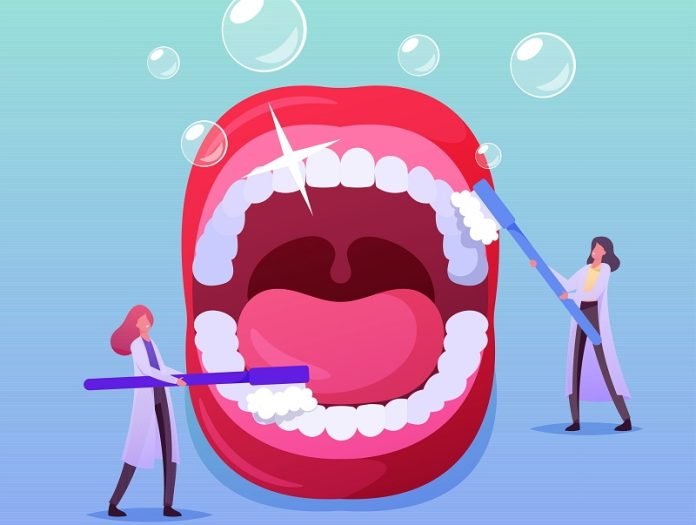
Dental and gum diseases are widespread health issues that can significantly impact our overall health and quality of life.
Understanding what causes these conditions can help us prevent them and maintain healthy teeth and gums.
The primary cause of most dental and gum diseases is plaque. Plaque is a sticky, colorless film of bacteria that constantly forms on our teeth. When we eat or drink foods containing sugars, the bacteria in plaque produce acids that attack tooth enamel, the hard surface of the tooth.
Over time, these attacks can lead to tooth decay, commonly known as cavities. If plaque is not removed by brushing and flossing, it can harden into tartar, which is much tougher to clean and can lead to more severe problems like gum disease.
Gum disease, also known as periodontal disease, starts when plaque extends below the gum line. The bacteria in plaque irritate the gums, leading to inflammation (gingivitis), which is the earliest stage of gum disease.
If left untreated, gingivitis can progress to periodontitis, a more serious form of gum disease where the gums pull away from the teeth and form spaces that can become infected. This can eventually cause the bones and tissues that support the teeth to break down, which might lead to tooth loss.
Several factors contribute to the risk and severity of dental and gum diseases:
Poor oral hygiene: Not brushing teeth regularly, not flossing, and not visiting the dentist for cleanings and check-ups are the most straightforward paths to dental problems.
Diet: Regular consumption of sugary and acidic foods and beverages can promote tooth decay and erode enamel.
Smoking: Smoking is strongly associated with the onset and progression of gum disease. Smokers are significantly more likely to develop gum problems than non-smokers.
Genetics: Just as with other health conditions, genetics can play a role in susceptibility to gum disease. Some people may be more prone to severe gum disease simply because of their genetic makeup.
Underlying health conditions: Diseases such as diabetes, cancer, and HIV/AIDS can compromise the immune system, making the body less able to fight off infections, including those that can start in the mouth.
Medications: Some drugs can reduce the flow of saliva, which has a protective effect on teeth and gums. Without sufficient saliva, the mouth is vulnerable to infections such as gum disease. Additionally, some medications can cause abnormal growth of gum tissue, making it difficult to keep teeth and gums clean.
Hormonal changes in girls/women: Changes during puberty, pregnancy, and menopause typically coincide with a rise in gum sensitivity and a greater reaction to irritation, increasing the risk of developing gum disease.
Prevention of dental and gum diseases is achievable with good oral hygiene practices.
Brushing at least twice a day with fluoride toothpaste, flossing daily, eating a balanced diet, and regular dental check-ups can dramatically reduce your risk. Quitting smoking and managing any chronic illnesses can also help maintain oral health.
Understanding the common causes and risk factors for dental and gum diseases is the first step toward prevention. With proper care and preventive measures, most dental and gum diseases can be avoided, leading to a healthier life and a brighter smile.
If you care about gum health, please read studies about an important causes of tooth decay and gum disease, and common tooth disease that may increase risks of dementia.
For more information about gum health, please see recent studies about mouthwash that may increase your tooth damage, and results showing this diet could help treat gum disease.
Copyright © 2024 Knowridge Science Report. All rights reserved.



